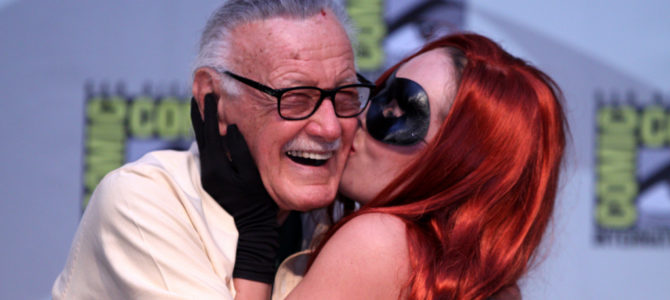Today it’s a given that if a character wears a cape, he must have issues. The template for such flawed superheroes was established by the late Stan Lee and legendary comic artist Jack Kirby more than 50 years ago at an almost bankrupt company called Marvel Comics.
Both pursued the novel approach of treating comic book readers like adults, so made their superheroes more relatable than glamorous. In the Marvel Comics world of the early 1960s, characters were plagued by tragedy and self-doubt. By today’s standards, where Batman is certifiable and Allan Moore’s characters get a sexual kick out of donning a costume, what Lee and Kirby did was pretty tame.
But from the vantage point of the early 1960s, where Cold War America wanted wholesome heroes like John Glenn, creating flawed characters was groundbreaking, even radical.
There is a debate to this day as to whether Kirby, considered by those in the industry to be the best comic artist of all time, created the characters while Lee merely penciled in the dialogue. (Kirby indeed had an enormous imagination and it is only now that Hollywood’s special effects have caught up to him.)
Lee’s personality helped fuel this dispute. He was clearly a show-off. Once during an interview with a silent Kirby beside him, Lee took over, rattling off ideas as if he were the only creative person in the room. Among industry figures, Lee was lambasted for not giving Kirby credit in the creation of Marvel’s superheroes.
It could seem that Lee, puckish, tongue-in-cheek, and a lover of the limelight, was little more than the public face of Marvel. Kirby grew disgusted with Lee. According to friend and comic historian Mark Evanier, Kirby was angry he “couldn’t get the proper recognition [from Lee].” Kirby stayed with Marvel solely to take care of his family financially. By 1970, he’d had enough. He switched to Marvel’s competitor, DC.
According to Evanier, Kirby created a character based on Lee named Funky Flashman. Flashman was a self-promoting fraud who took credit for creative work he had no part in.
But the idea that Kirby told the story and Lee adapted the dialogue to it doesn’t hold up. It’s clear Lee was a pioneering and gifted comic book writer. At his best, Lee could capture mood and character with one line. (“With great power comes great responsibility.”) He could get you rooting for a whiny Peter Parker in three panels.
Lee would hop on any trend, and adapt his characters to the needs of Hollywood (during the 1970s Disco era, he pitched Thor as a bed-hopping playboy). But there was something charming about that as well. When the martial arts craze hit, Marvel came up with Iron Fist. When “The Exorcist” broke box office records, Marvel created the Son of Satan and revived Dracula. From “Planet of the Apes” to “Conan the Barbarian,” Marvel was always testing the wind and adapting.
They adapted these trends in the Lee-Kirby way. Iron Fist could spin-kick like Bruce Lee but was plagued with self-doubt. Dracula, once pure evil, was portrayed as tragic. After securing the rights to “Planet of the Apes,” Marvel took the series in a new, exciting direction.
Lee was the last of the old guard. Today’s comic book writers and artists grew up on the genre. They had a building block. But Lee and Kirby grew up in a pre-comic book period, where the closest thing was the pulps and old radio. Both took this new art form, essentially a movie on paper (Orson Welles loved comics and used the form’s “shots” for “Citizen Kane”) and made it something that adults and intellectuals could enjoy.









